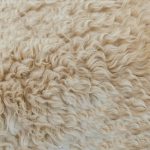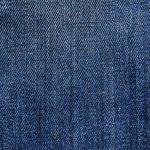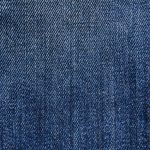Choosing between polyamide and cotton depends on what you need. If you want lightweight, durable, and moisture-wicking fabric for active or outdoor use, polyamide’s your best bet. But if comfort, breathability, and softness for everyday wear are priorities, cotton will suit you better. Cotton is natural and gentle, while polyamide excels in performance and quick drying. Keep exploring to see which fabric fits your lifestyle and environment more perfectly.
Table of Contents
Key Takeaways
- Polyamide excels in durability, moisture-wicking, and quick drying, making it ideal for activewear and outdoor use.
- Cotton offers superior breathability, softness, and comfort, perfect for everyday casual wear and sensitive skin.
- Polyamide resists wrinkles and abrasion better, requiring less maintenance than cotton, which can pill and wear out faster.
- Cotton is more environmentally friendly in decomposition but uses more water and pesticides during production than polyamide.
- Choose polyamide for performance and longevity; opt for cotton if natural fibers and comfort for daily wear are priorities.
Overview of Polyamide Fabric
Although you mightn’t always notice it, polyamide fabric plays a big role in your everyday clothing and gear. You’ll find it in everything from activewear and swimwear to outerwear and luggage.
Polyamide, commonly known as nylon, is a synthetic fiber prized for its strength and durability. When you wear it, you benefit from its lightweight nature and resistance to abrasion, which means your clothes last longer despite frequent use.
Polyamide, or nylon, offers strength, durability, and lightweight comfort for longer-lasting clothing.
It also dries quickly, so you stay comfortable even during intense workouts or rainy days. If you value fabrics that maintain shape and resist wrinkles, polyamide has you covered.
Plus, it’s easy to care for, requiring minimal ironing or special treatments. Understanding polyamide helps you choose the right fabric for your lifestyle.
Characteristics of Cotton Fabric
Cotton fabric offers natural comfort and breathability that many people appreciate in their everyday clothing. When you choose cotton, you’re opting for a fabric with several key characteristics:
- Softness – Cotton fibers feel gentle against your skin, making it ideal for sensitive skin types.
- Durability – It withstands repeated washing and wear, holding up well over time.
- Absorbency – Cotton absorbs moisture effectively, helping to keep you dry.
- Hypoallergenic – It’s less likely to cause allergic reactions or irritate your skin.
These traits make cotton a versatile and reliable fabric for various uses.
You’ll find it in everything from casual wear to bedding, thanks to its natural qualities and ease of care.
Cotton remains a popular choice when you want comfort combined with practical benefits.
Comfort and Breathability Comparison
When choosing between polyamide and cotton, you’ll want to contemplate how each fabric handles moisture and regulates temperature.
Cotton naturally breathes well and feels soft against your skin, while polyamide excels at wicking sweat away during activity.
Also, think about your skin’s sensitivity, as cotton tends to be gentler for those prone to irritation.
Moisture Management Differences
You’ll notice that polyamide and cotton handle moisture very differently, which directly affects how comfortable and breathable they feel.
When you wear cotton, it absorbs sweat quickly but tends to hold onto moisture, making the fabric feel heavy and damp.
On the other hand, polyamide excels at wicking moisture away from your skin, drying faster and keeping you feeling fresher.
Here’s a quick breakdown:
- Cotton absorbs moisture up to 27 times its weight but dries slowly.
- Polyamide repels water and moves sweat to the fabric’s surface.
- Cotton’s moisture retention can cause discomfort during intense activity.
- Polyamide’s quick-drying nature enhances comfort in humid or active environments.
Understanding these differences helps you pick the right fabric for your moisture management needs.
Temperature Regulation Abilities
Although both polyamide and cotton offer unique benefits, their temperature regulation abilities vary considerably, impacting your comfort and breathability.
Cotton naturally allows air to circulate, helping keep you cool in warm weather by absorbing moisture and letting it evaporate. This breathability makes cotton ideal for everyday wear, especially in hot climates.
On the other hand, polyamide is less breathable but excels at trapping heat, which can keep you warmer in cooler conditions. Its synthetic structure limits airflow, so it may feel less comfortable in hot, humid environments.
If you want fabric that adjusts better to your body temperature during physical activity, cotton tends to perform better, while polyamide suits situations where retaining warmth is more important.
Understanding these differences helps you pick the right fabric for your needs.
Skin Sensitivity Considerations
Because your skin interacts directly with fabric all day, considering skin sensitivity is essential when choosing between polyamide and cotton.
Cotton is naturally hypoallergenic and gentle, making it ideal if you have sensitive skin or allergies. Polyamide, a synthetic fiber, may sometimes cause irritation, especially if you sweat a lot or have sensitive skin.
Here’s what you should keep in mind:
- Cotton allows your skin to breathe, reducing the risk of rashes and irritation.
- Polyamide can trap heat and moisture, potentially causing discomfort.
- Cotton’s natural fibers are less likely to cause allergic reactions.
- Polyamide’s smooth texture might feel less abrasive but can hold onto bacteria if not washed properly.
Choose based on how your skin reacts to these fabrics for maximum comfort.
Durability and Maintenance
When you’re choosing between polyamide and cotton, durability and care play a big role.
You’ll want to contemplate how long each fabric lasts and how easy it’s to clean.
Let’s look at their wear resistance and maintenance needs to help you decide.
Longevity and Wear Resistance
Durability plays an essential role in choosing between polyamide and cotton, especially if you want your clothes to last through frequent wear and washing.
Polyamide, known for its strength and elasticity, generally outperforms cotton in longevity and wear resistance. When deciding, consider these factors:
- Polyamide resists abrasion better, making it ideal for activewear.
- Cotton tends to wear thin and pill over time with heavy use.
- Polyamide maintains shape and color longer due to its synthetic fibers.
- Cotton’s natural fibers can weaken faster, especially when exposed to friction.
If you prioritize long-lasting garments that withstand rough conditions, polyamide is a strong contender.
However, your choice depends on balancing comfort with durability based on your lifestyle.
Care and Cleaning Requirements
Although both polyamide and cotton offer unique benefits, their care and cleaning requirements differ considerably, affecting how you maintain their durability.
Polyamide, being synthetic, resists wrinkles and dries quickly, so you can wash it in cold water and avoid high heat drying to prevent damage. It’s best to steer clear of bleach and fabric softeners, which can degrade the fibers.
Cotton, on the other hand, is more forgiving but can shrink or lose shape if washed in hot water or dried on high heat. You’ll want to use mild detergents and avoid excessive agitation to keep cotton soft and intact.
Environmental Impact and Sustainability
Because polyamide is a synthetic fiber made from petrochemicals, it has a markedly different environmental footprint than cotton, which is a natural fiber grown from plants.
When choosing between these fabrics, consider the following sustainability factors:
- Resource Use: Cotton demands large amounts of water and pesticides, while polyamide relies on fossil fuels.
- Biodegradability: Cotton decomposes naturally; polyamide can persist in landfills for decades.
- Microplastic Pollution: Washing polyamide releases microplastics into waterways, unlike cotton.
- Renewability: Cotton is renewable annually, whereas polyamide depends on non-renewable resources.
Cost Considerations for Each Fabric
When deciding between polyamide and cotton, you’ll find that cost plays a significant role in your choice. Polyamide tends to be less expensive upfront due to its synthetic production process, while cotton prices can fluctuate based on farming conditions and labor costs. However, cotton’s natural fiber might lead to higher maintenance expenses over time.
| Fabric | Initial Cost | Maintenance Cost |
|---|---|---|
| Polyamide | Lower | Moderate |
| Cotton | Higher | Higher |
Ideal Uses for Polyamide
Understanding the cost differences between polyamide and cotton helps you evaluate their practical applications.
Polyamide’s durability and moisture-wicking properties make it ideal for specific uses where performance matters.
Here are four ideal uses for polyamide:
- Activewear: Its lightweight, stretchable nature supports movement and breathability during workouts.
- Swimwear: Polyamide resists water absorption, dries quickly, and maintains shape even in chlorinated pools.
- Outdoor Gear: Its resistance to abrasion and weather makes it perfect for jackets and hiking apparel.
- Lingerie: The smooth texture and flexibility provide comfort and a sleek fit.
Ideal Uses for Cotton
Although polyamide excels in performance-focused gear, cotton shines in everyday comfort and versatility.
When you want breathable, soft clothing for daily wear, cotton is ideal. It’s perfect for t-shirts, casual shirts, underwear, and socks because it absorbs moisture and feels gentle against your skin.
Cotton also works well for bedding and towels, offering a cozy, natural touch that helps you relax. If you’re sensitive to synthetic fabrics, cotton’s hypoallergenic qualities will suit you better.
However, it’s not the best choice for intense workouts or wet environments since it retains moisture and dries slowly.
Still, for comfort, ease of care, and natural feel, cotton is your go-to fabric for most casual and home textiles.
Frequently Asked Questions
How Do Polyamide and Cotton Fabrics React to Allergies?
Allergies can hit you like a sudden storm. Cotton’s natural fibers usually soothe sensitive skin, while polyamide might trap sweat and irritate. You’ll want to pick cotton if you’re prone to allergic reactions.
Can Polyamide Fabric Be Recycled Effectively?
You can recycle polyamide, but it’s not always straightforward. Specialized facilities handle it, turning waste into new fibers. However, recycling rates are lower than natural fabrics, so you might want to check local options first.
Does Cotton Fabric Shrink After Washing?
Yes, cotton fabric often shrinks after washing, especially if you use hot water or high heat in the dryer. To avoid this, you should wash cotton in cold water and air dry or use a low heat setting.
Are There Any Flame-Resistant Properties in Polyamide?
You shouldn’t expect polyamide to resist flames, burn slowly, or self-extinguish because it’s not flame-resistant. You’ll find it melts and ignites quickly, so avoid using it where fire safety is essential.
How Do These Fabrics Affect Skin Conditions Like Eczema?
If you have eczema, you’ll find cotton’s softness less likely to irritate your skin, while polyamide might cause discomfort due to less breathability and potential allergies. Choosing cotton helps keep your skin calm and comfortable.
- The Art of Resist Dyeing: Tie-Dye, Batik, and Beyond - July 13, 2025
- How to Tie-Dye a Swirl Pattern (Spiral Technique) - July 13, 2025
- Achieving Saturated vs. Pastel Colors in Tie-Dye - July 13, 2025







